Storytelling
How to Pull Off a Year-in-Review Campaign People Will Actually Share
Before the Thanksgiving turkey is gone, marketers are already planning for the new year. A year-in-review campaign is a popular and impactful way to connect with customers and employees.
Have you thought about doing one but are unsure how to pull it off? We’ll walk you through the making of this type of creative campaign with a step-by-step guide and examples from brands that have done it successfully in the past.
What is a year-in-review?
A year-in-review is a marketing campaign that celebrates your brand and audience by honoring different milestones or achievements throughout the year. A successful one makes customers feel like a part of your story and utilizes infographics, videos, letters, multi-page PDFs, articles, or a combo-set.
These campaigns typically focus on brand building but can also be used to re-engage former customers or move prospects down the funnel with the right call-to-action.
What does a year-in-review look like?
The most engaging year-in-review campaigns tell an audience a personalized story about themselves, usually using customer data. You’ll have to be careful with this strategy—it can be a bit creepy if you go overboard—but when done right, it’s one of the most effective ways to make someone feel like your brand understands them.
Spotify’s Wrapped playlists are a famous example of this strategy. They create custom playlists for listeners at the end of the year based on their unique preferences. These playlists include your top songs, artists, tracks, podcasts, episodes, and more.

Image Source: TechCrunch
Spotify sends an email at the end of the year to drum up excitement before their Wrapped playlists drop, which has become an eagerly-awaited event for users of the platform.

Google used customer data in a different way. Rather than sharing personalized insights for every user, they aggregated global search trends and selected a theme to celebrate in an end-of-year video. This year’s #YearInSearch focused on trends related to people’s willingness to change themselves, their lives, and the world for the better.
I’m not crying; you’re crying.
Some choose to share data about their business’s accomplishments in a way that expresses gratitude to customers for making them a reality. In 2021, Campaign Monitor launched an infographic and blog post covering milestones like the number of emails they sent, products launched, support tickets resolved, and the number of countries they’d expanded to.
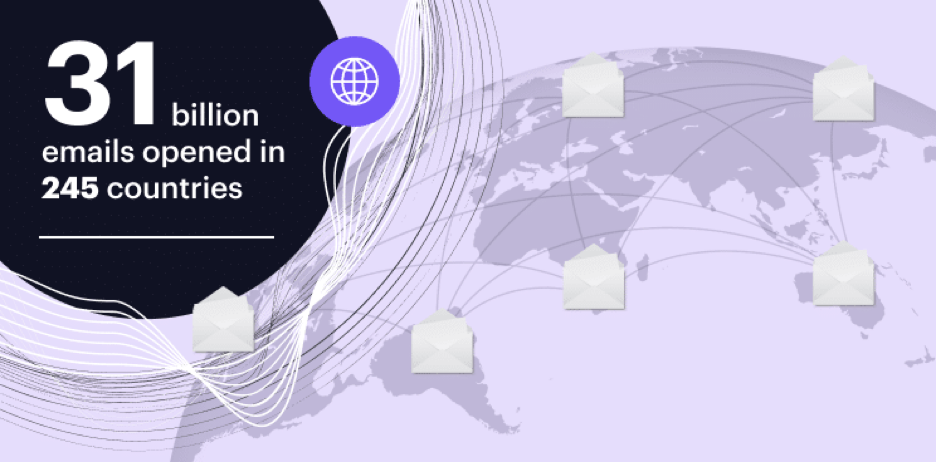
A year-in-review campaign is also a great time to celebrate your employees’ accomplishments by sharing data like the number of offices opened, employees hired, diversity statistics, meetings, or emails. Consider including fun data here too, like cups of coffee drunk or books read.
Nordstrom took this route last year in a press campaign that covered all of their company milestones throughout the year:

Progressoft.com’s CEO wrote a letter to employees and customers that included anecdotes from throughout the year and celebrated the perseverance he saw from his internal team.
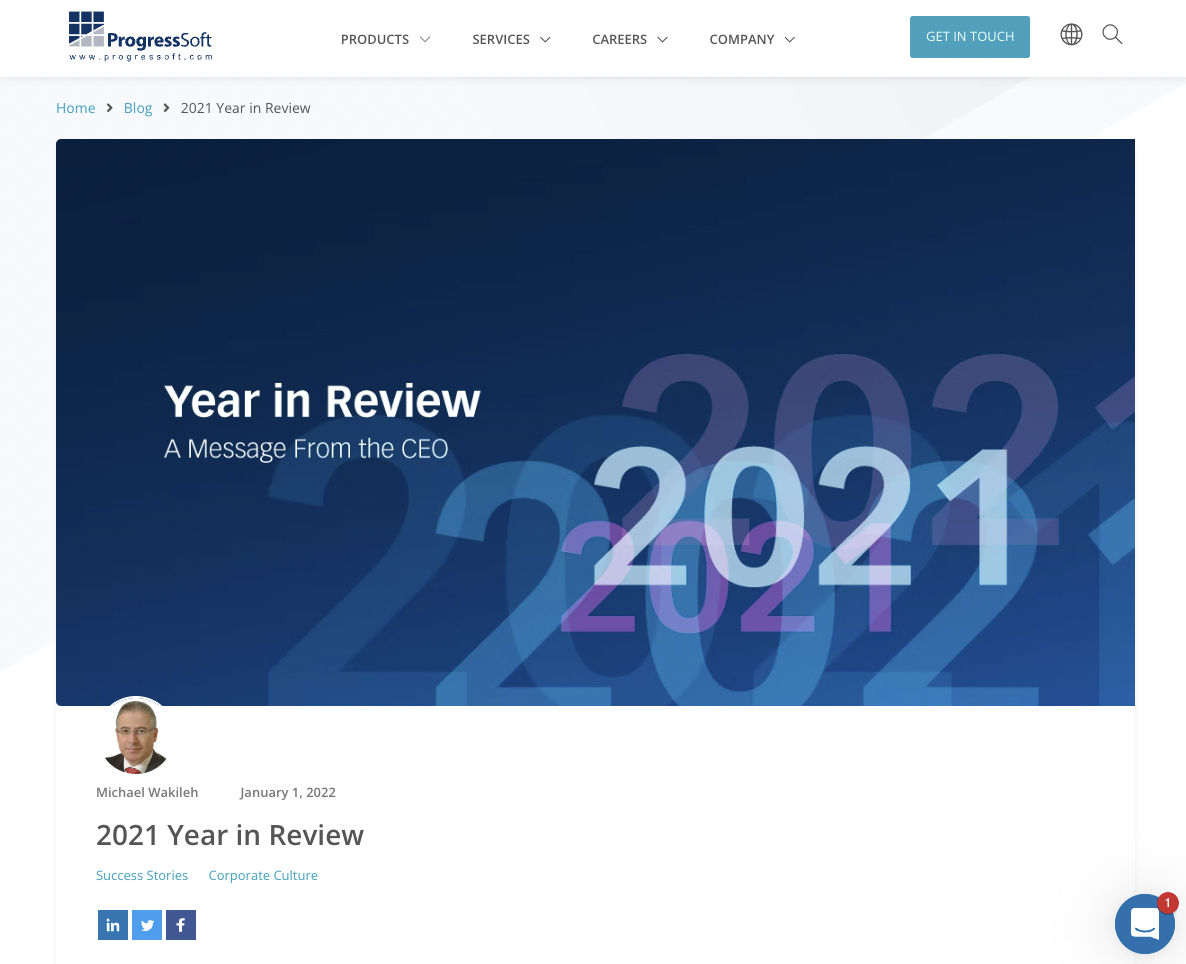
The year-in-review campaign can be easy to dismiss if you’re not focused on branding goals, but it shouldn’t be discarded lightly. Customer engagement is vital throughout the entire funnel, and the more connected your audience feels to your brand’s story, the more they’ll feel an incentive to be a part of your success.
How to Successfully Launch a Year-in-Review Campaign
To pull off a year-in-review campaign, you’ll want to start early and have a system for staying organized throughout the planning, research, creation, and measurement phases.
1. Plan
Start your year-in-review campaign at least two months before your desired launch date. In some larger organizations, you might want to start a full quarter in advance. You’ve finished planning your campaign when you’ve got the following deliverables:
- A list of stakeholders and clarity on who’s responsible for performance, accountable for assets, and consulted or just kept informed
- Agreement from those stakeholders on the planned format of your assets
- A brainstormed list of potential data or anecdotes
- An approved storyboard or outline for each planned asset
- Agreement on the campaign’s goal, the key performance indicators (KPIs) to be measured, and the call-to-action (CTA) for each asset
Every stakeholder needs to align on the potential data or anecdotes in the planning stage. Making changes to the story after you’ve started research or asset creation will be frustrating for everyone involved and may result in additional work.
2. Research
Gathering the data you need to create your campaign will involve several teams. This general guide should act as a starting point to help you hunt down information but will change from company to company.
- Engineering or data science teams can pull customer data
- Human Resources (HR) or information technology (IT) can pull data on headcount and offices
- Finance can pull data on revenue and customer spend
- Executives can pull together company and industry milestones
- Marketing can pull data from the website and unique customer data in collaboration with customer success (to create profiles like Spotify does, based on user interaction with software)
Collect all your potential data and anecdotes in a single outline for approval. Include all the stakeholders you identified in step one, as well as legal and compliance if necessary. Spend a lot of time at this stage selecting your data and getting appropriate, written approval. This stage might take a lot of time, but it’s critical to ensure a smooth launch.
3. Create Assets
Start by considering the creative skills you have in-house and those you need to outsource. Depending on your format of choice, you may need to find writers, editors, analysts, graphic designers, video producers, or audio producers.
Staff your freelancers as early as possible, so they’re ready to hit the ground running once you’ve finished your research. Keep everyone organized with a clear workflow that visualizes the creative process from start to finish. Contently is an industry-leading content marketing platform that provides access to over 160,000 freelancers worldwide and allows you to build custom workflows, so they work seamlessly with your internal team.
If your year-in-review campaign consists of a blog article, for example, you might want to include steps in your workflow for the brief, outline, draft, approvals, revisions, social media copy, and publishing.

Your workflow would change for an infographic, potentially including data selection and steps for design and revisions. If your infographic will live in a blog article, it might make sense to combine the two workflows, so everything stays in one place.

Video workflows will include steps for storyboarding, scripting, production, and the appropriate approvals. Consider specific video elements you might need to approve along the way, like animations or images, and include steps dedicated to them to cut down on redundant work.
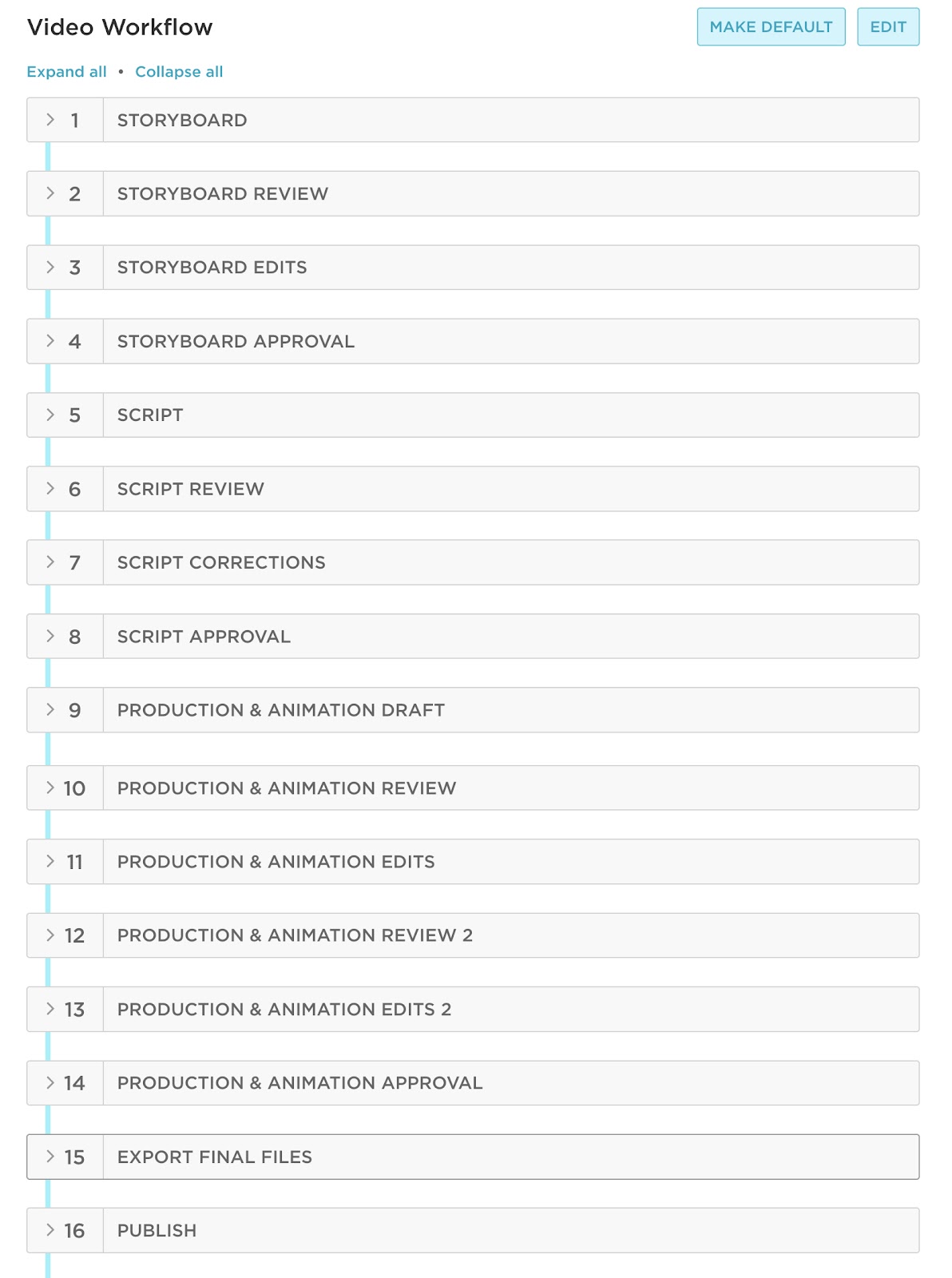
Don’t forget the additional assets you need to create for distribution. In some cases, it might make sense to set up additional workflows for emails or social media content.
Your email workflow should include copy, design, and scheduling alongside steps for revisions and approval.
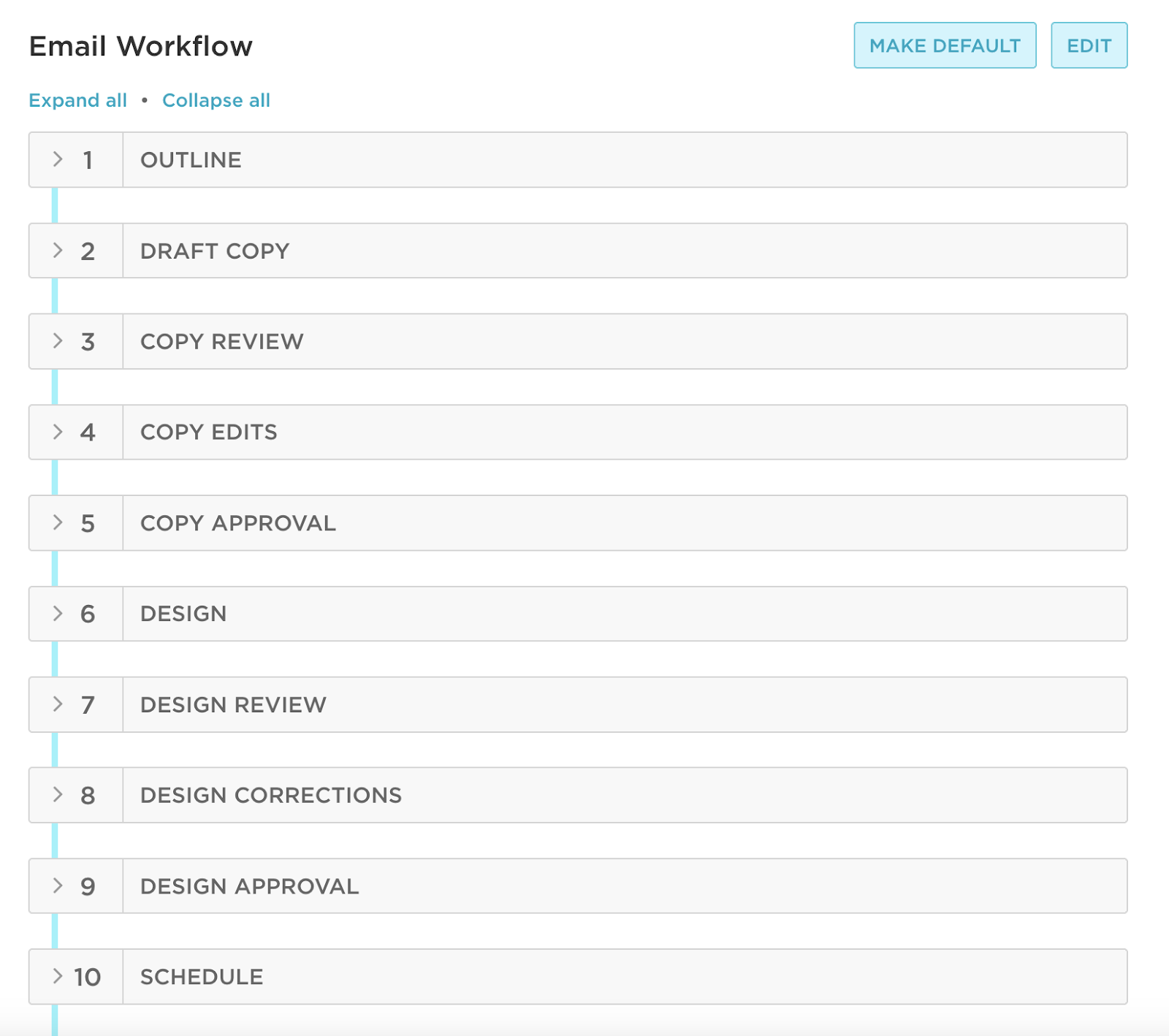
Social media could include a lot of different stages, depending on the type of content you produce. A video campaign will look a lot different from one that includes carousel image assets or just standard copy, so adjust accordingly. The following example workflow includes standard copy, design, and editing steps.
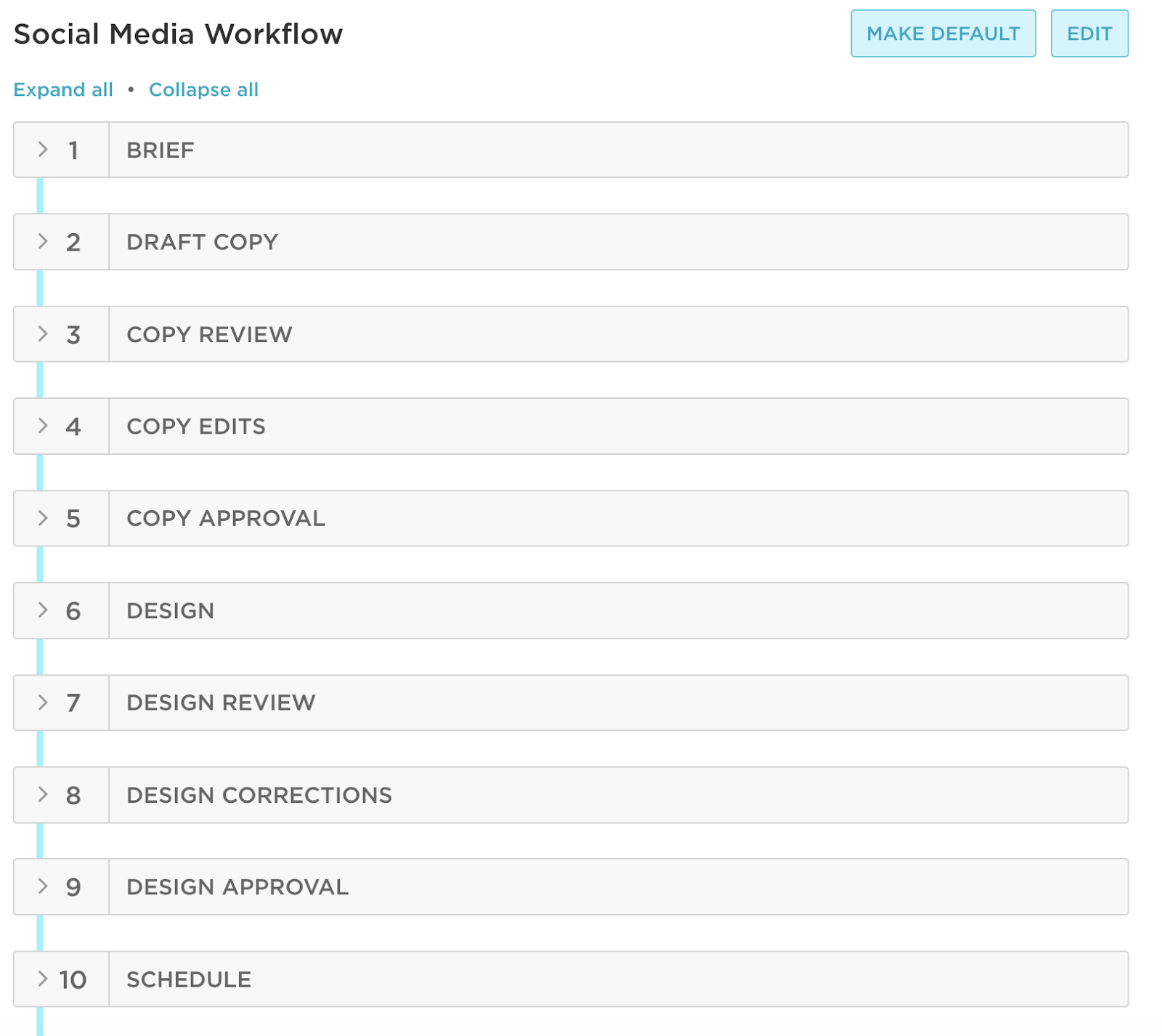
When you work with Contently, the platform automatically notifies team members when it’s their turn to work on a project or a deadline is approaching. It also allows content marketers to split payments between workflow steps, so you can easily pay different freelancers in the same workflow (and skip cutting checks through Accounting).
5. Set Up Analytics
Check that you have the technical infrastructure to track the KPIs you agreed upon in your planning phase before your assets go live. Exactly how you measure your success will depend on your content’s format, but you can start by asking yourself questions like:
- Do tracking pixels need to be installed on any landing pages so I can see where traffic is coming from?
- Do custom links need to be built with urchin tracking module (UTM) codes to easily track campaign performance in Google Analytics?
- Is the marketing automation system connected to the sales team’s customer relationship management (CRM) tool so I can measure the impact on revenue?
The answers to these questions might require data science and analytics teams, but you can easily track success using tools like Contently. For example, Docalytics can track the value of the content you’ve created based on the amount you would have paid for organic traffic, as well as where readers focus the most within a PDF.

6. Launch!
Finally—after all that effort to prepare, write, design, test, edit, and test your assets again, you’re ready to launch your year-in-review campaign.
The lifecycle of this type of campaign is short. Regularly review your progress for any necessary optimizations—we recommend every week for a month. At the end of the month, recap your campaign’s impact on your overall goals.
A Year-in-Review Campaign Is About Celebration
Your campaign should be driven by an emotional desire to connect with your customers and employees—and to celebrate with them at the year’s end.
Infuse this energy into every stage of your year-in-review campaign, from planning to measurement, and treat it as an opportunity to bring the voice of your audience to the forefront of your brand story. If you can entertain, delight, and express gratitude for them, you’ve made a real emotional connection and can call your year a wrap.
Sign up for our weekly newsletter for more insider tips on how to successfully execute content marketing campaigns like these all year round.
Image by treetyGet better at your job right now.
Read our monthly newsletter to master content marketing. It’s made for marketers, creators, and everyone in between.




